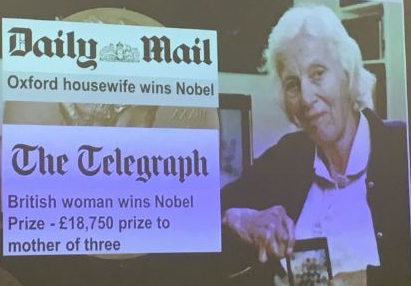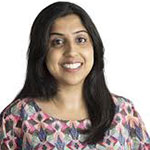It’s International Women’s Day, so we’re all being challenged to think about how far we’ve managed to eliminate gender biases in our work. What’s going on in sexism and diversity for academic research and scholarly publishing?
At a rallying talk for editors of BMJ’s journals (Twitter #bmjeds) this morning, Pavel Ovseiko from Oxford’s Radcliffe Department of Medicine reminded the audience that we have made some inroads since the 1960s when Dorothy Hodgkin was the first British woman to win a science Nobel Prize, and some newspapers described her as a housewife and mother of three.

But we still have some way to go. In the UK we know that those admitted to medical school are now more likely to be female than male, but clinical leadership remains heavily male. As Ovseiko pointed out (see graph below), even when we consider the gender ratios for admissions at the time current leaders were studying, admission numbers still don’t match leadership numbers.
 It can be challenging to unpick the reasons, but he and others are trying hard to do so.
It can be challenging to unpick the reasons, but he and others are trying hard to do so.
Of course, diversity is more than gender, and gender representation requires more than a binary focus on men versus women. This journal carried an obituary earlier this year of the great transgender role model Ben Barres. Being the first openly transgender person elected to the US National Academy of Sciences made Ben a prominent role model. But it was his willingness to call out the sexism he’d experienced in his earlier life as Barbara, and his perceptions of the sexism he saw and heard once he was publicly a man, that made him a hugely admired advocate and equality champion.
So what can we do to improve gender representation, and diversity generally, in clinical research and publishing? Despite the importance of role models, we must be careful to avoid tokenism. Each of us has experienced being invited to appear on a panel or in another setting as the woman or minority voice—although our experience has not been quite as flagrant as that of Emily Sena, editor in chief of BMJ Open Science:

Some established programs, such as Athena Swan and the WISE Campaign in science, technology, engineering, and maths (STEM) are bearing fruit. They are building networks of supporters, sharing best practice, and—in the case of Athena Swan—providing benchmarking for organisations aiming to demonstrate their progress in gender equality. The Race Equality Charter aims to improve the representation and progression of minority ethnic staff and students in higher education. In a bid to encourage diversity among senior NHS leaders, the NHS Leadership Academy runs programmes for women and black and minority ethnic staff. These are all encouraging steps, but often it takes mandatory standards to see real change. In 2011, the UK National Institute for Health Research (NIHR) declared that they would not shortlist any NHS or academic partnerships for grants unless the department held at least a silver Athena Swan award. Since then there has been a substantial increase in applications for Athena Swan awards and in women in academic leadership roles.
There are also burgeoning grassroots efforts to drive change. If you are already being asked to speak at conferences and other events, or nominated for a grand prize, could you demand inclusion riders or otherwise insist on more diversity—for example, by declining to appear on all male, all white panels (see http://www.stemwomen.net/jonathan-eisen/)? Activist groups are taking different approaches. From one angle, 500 women scientists aims to help those who want to increase the number of women they contact. While from a different perspective, Pride in STEM and the Royal Society’s LGBT+ celebrations are aiming first to increase the visibility of people who can serve as role models and mentors
And in our own area of publishing, some authors and publications are taking a visible lead. Prominent science journalist Ed Yong has described his two year journey to include more women in his science news writing. His key insight: measuring something carefully is really important if you want to change it. He kept a spreadsheet of how many women he’d asked, for example, to comment on stories or to deliver a quote. The New York Times, aware that its obituaries have predominantly featured white men, launched an “Overlooked” obituaries initiative describing 15 women. And, closer to home, the Lancet has published a theme issue on women in science, medicine, and global health.
What, you might ask, is The BMJ, and our company BMJ, doing in this area? As with many diversity efforts, our first look is at gender (in a binary way). In the journal world we see gender disparities play out at multiple levels: from the makeup of editorial boards, to the proportion of authors and peer reviewers we invite, and even in the research questions and study recruitment of the research papers we publish.
We aren’t yet able to declare that all BMJ journals have equal representation of men and women as authors, reviewers, or editors. But we’ve started with auditing our editorial boards and editors in chief, and plan to measure again regularly to check our progress. We are also looking at how best to ensure reporting of gender breakdown in research studies. We’d welcome suggestions about how we can do more to ensure that other aspects of diversity are also considered, measured, and improved.

Theodora Bloom, executive editor, The BMJ.

Navjoyt Ladher, clinical editor, The BMJ.
